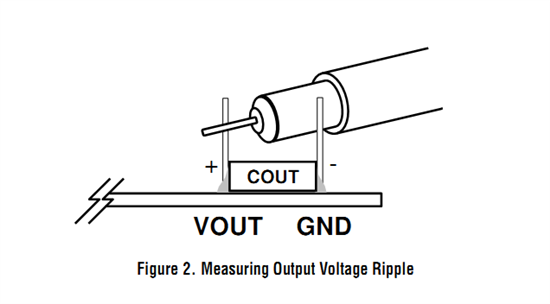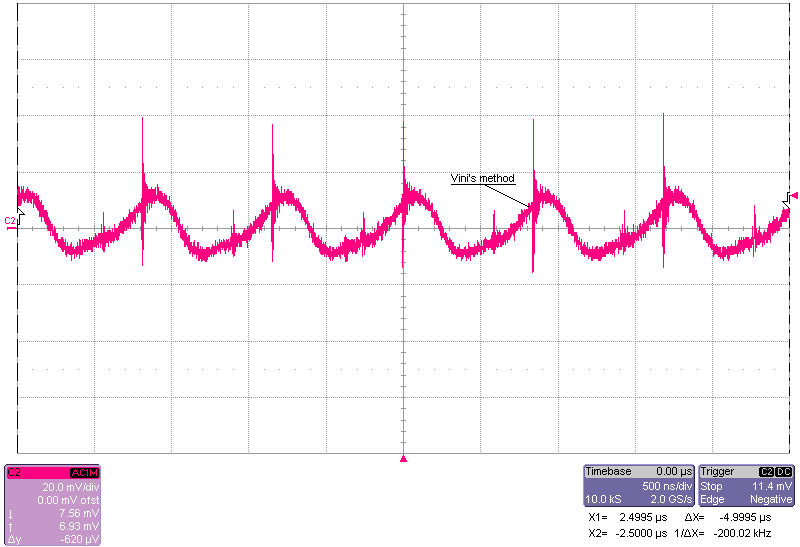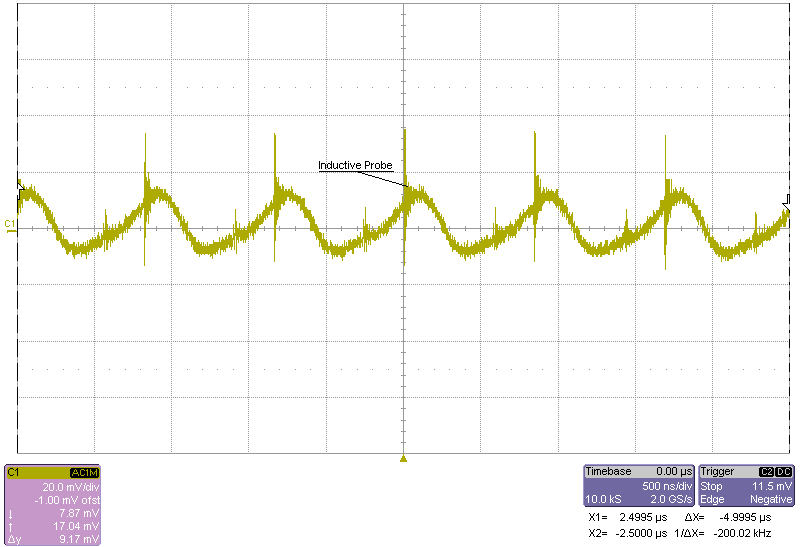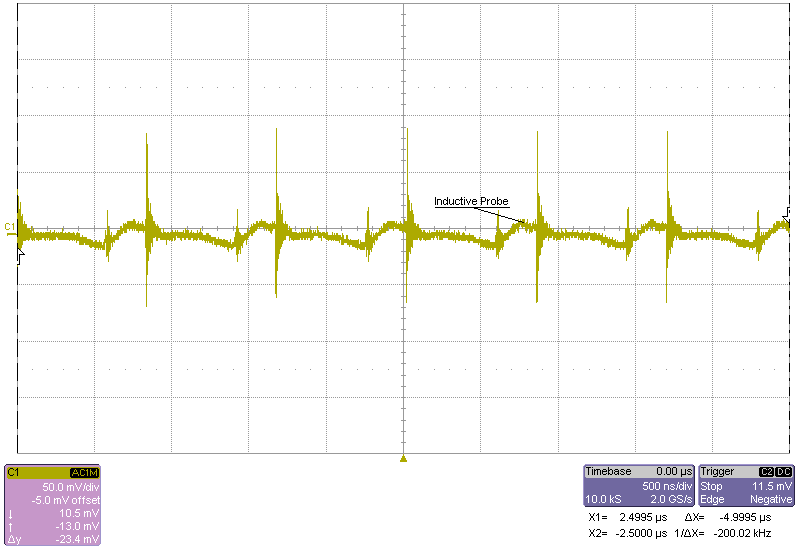Hi,
I am using TPS61087 for generating 7.5V from 5V. I am seeing a high frequency noise on the output as shown in the image given below
Here are the design parameters
- The 7.5V output is used to drive a motor which can draw from a min of 50mA to a max of 500mA current. So design is done for 500mA load.
- Switching frequency is selected as 1.2MHz .
- Input cap is 10uF in parallel to 1uF.
- Output caps are two 22uF/25V in parallel.
- Inductor is 10uH with a saturation current of 1.9A
- An RC is used at COMP pin for compensation (R=100K, C=1nF)
The waveform shown above is captured with a DC resistive load of ~275mA.
Can anyone tell me if I am missing anything here?
I think this kind of switching noise is inherent to switching DC/DC converters but amplitude a more here and that too with a uniform load. Has anyone else seen this issue with TPS61087?
Vini






